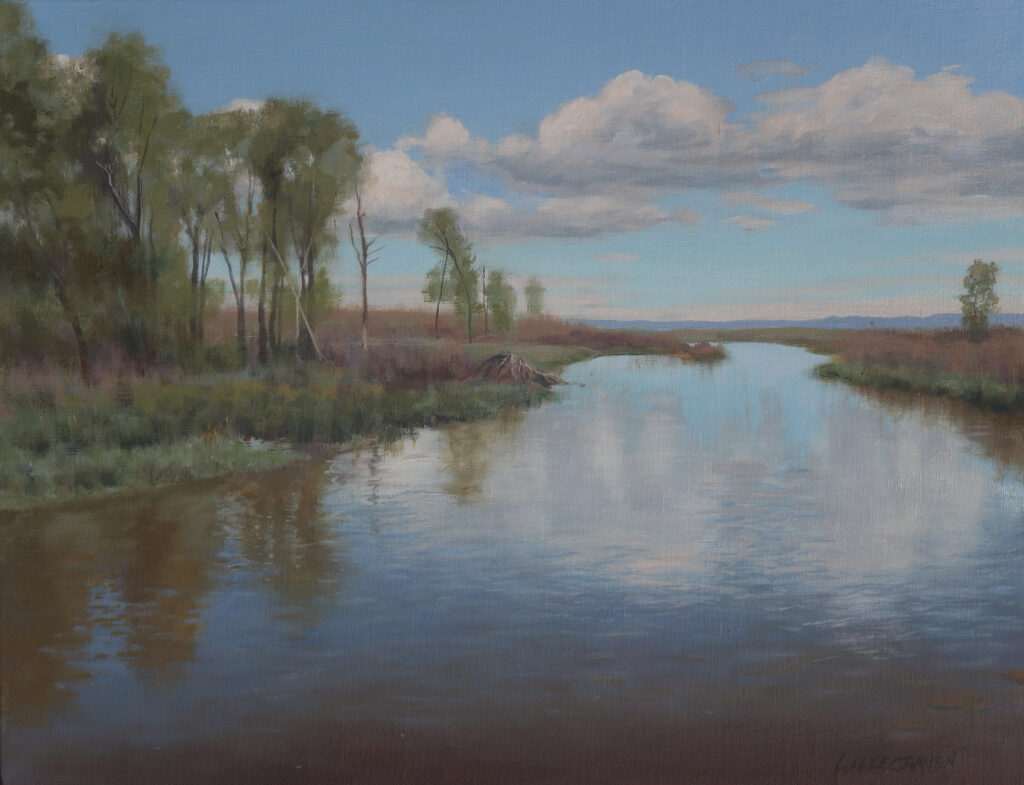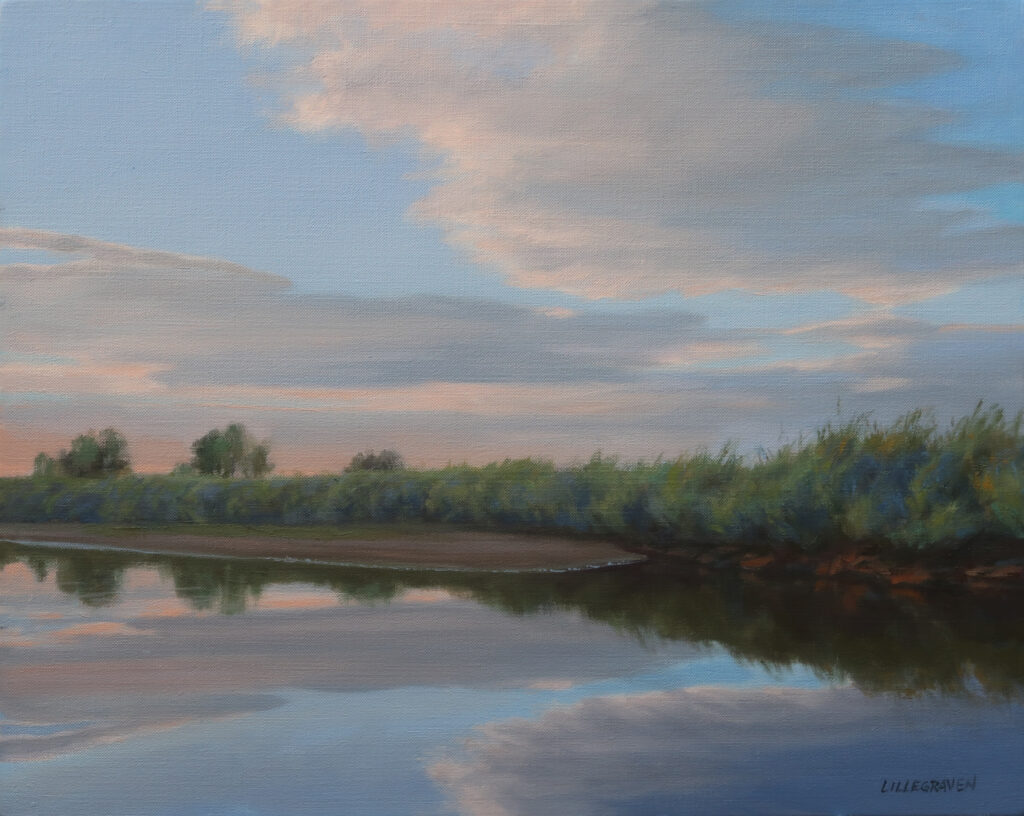Linda Lillegraven is a Wyoming-based painter and biologist who loves to paint the open prairie, striving to include a minimal amount of detail while simultaneously giving the viewer a sense of space. Through Lillegraven’s detailed and knowing eye, she cuts through the thin air, hard light and barely discernible transitions of color and tone characteristic of the thin atmospheres of Colorado and Wyoming. Lillegraven uses the glassy surface of water to expand the impact of expansive, gradient skies.

Lillegraven: The challenge of painting open spaces is that there are so few obvious cues to distance. The sinuous path of a river is an easy way to lead the eye away and has been used that way by artists for hundreds of years. Also, calm water is a flat surface. That may seem obvious, but it gives a powerful cue to the nature of the space around it.
Lillegraven: I live in Laramie, Wyoming, a college town on the edge of a mostly grassy valley between mountain ranges. When I want to find water to paint, there are two rivers and a number of small lakes fed by mountain snows. Bodies of water seem all the more precious here on the high, dry western plains. In Spring, pastures and back roads are briefly flooded, the shallow water mirroring the trees and sky. In winter, a cold night can suddenly freeze the surface of rivers and lakes.
I love the complexity of water — the way reflections change in tone and hue; the way our angle of view affects the color of the surface. Stand close enough, and shadows on the bottom mingle with the refracted sparkle of ripples.
There is quite a lot of water in the Laramie Valley, but most of it is inaccessible to the public. I rely on fishing easements (Beaver Lodge on a River Bank, Willows Along the Laramie River, Laramie River Summer Twilight) or several small reservoirs (Water and Sky), or bridges across the rivers and streams. And in Spring, streams and canals can overflow, flooding pastures (Western Skies 39).

Lillegraven: We all think we know what water looks like, but when you observe closely, certain patterns become clear. Like any “rules” for landscape painting, there are exceptions, but in general light colors like blue sky and clouds are not as light when seen reflected in water. Dark shapes like trees, on the other hand, are not as dark. The geometry of reflections can be devilishly complex. And the water nearest to where you’re standing, where you’re looking down into the shallows and start to see the bottom, can be surprisingly dark — especially if you are looking down from the bank or from a bridge.
Lillegraven: I’m drawn more toward expanses of quiet water than tumbling mountain streams or waterfalls.
Lillegraven: I go out to my favorite haunts but am always prepared to be surprised. The light here is so variable from season to season and morning till evening that I never know what is going to set off my painting-finding mental radar. It takes great concentration to be receptive to the elements that will make a good painting. And it takes determination to really observe and remember what nature presents to us.
Lillegraven: I rely on my camera to record information and to jog my memory back in the studio. I rely on my memory to focus on the feelings I had while standing in that spot, and why I thought those feelings and impressions were worth sharing.